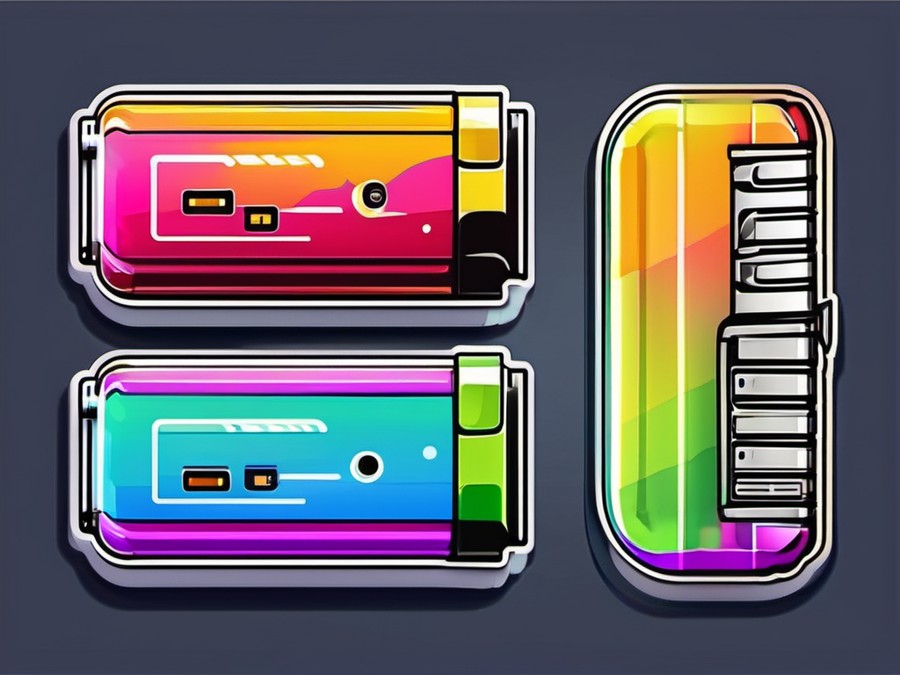· Charlotte Will · Batteries · 7 min read
What is a Rechargeable Battery and How Does It Work?
Learn about rechargeable batteries, how they work, types, benefits, lifespan, and tips for extension. Discover real-world applications and future of battery technology.

Ah, the humble yet powerful rechargeable battery. It’s the unsung hero that keeps our devices charged and ready to go. But have you ever wondered how these magical powerhouses work? Let’s dive in and explore the fascinating world of rechargeable batteries, from their inner workings to their environmental impact.
What is a Rechargeable Battery?
In simple terms, a rechargeable battery is an energy storage device that can be recharged and discharged multiple times. Unlike primary batteries, which are used once and then discarded, rechargeable batteries are designed to be reused, making them both cost-effective and environmentally friendly.
Rechargeable Batteries vs Primary Batteries
Primary batteries, often called disposable or non-rechargeable, are typically used once and then thrown away. On the other hand, rechargeable batteries can be recharged multiple times, reducing waste and saving money in the long run. For a deeper dive into primary batteries, check out this article on CWDM transceivers.
The Science Behind Rechargeable Batteries
Rechargeable batteries rely on a chemical process called redox reaction, short for reduction-oxidation. This process involves the exchange of electrons between electrodes (conductors that allow electric current to flow) and an electrolyte solution.
Electrochemical Cells
At the heart of every rechargeable battery lie electrochemical cells. These are where the magic happens—where chemical energy is converted into electrical energy. The cell consists of two electrodes (an anode and a cathode) and an electrolyte solution, which allows ions to move between the electrodes.
Redox Reaction
The redox reaction is what powers the battery. In a discharging state, the anode releases electrons that travel through an external circuit (like your device) to the cathode. Inside the battery, ions move through the electrolyte solution to complete the circuit. When you recharge the battery, this process reverses—electrons flow back to the anode, and ions move in the opposite direction.
For more on how electrical circuits work, you can check out this article on VHF marine antennas.
How Rechargeable Batteries Work
Anode and Cathode
The anode is where electrons are released during discharge, while the cathode is where they’re received. During recharging, this process reverses—electrons flow back to the anode.
Electrolyte Solution
The electrolyte solution is crucial. It facilitates the movement of ions between the anode and cathode, completing the electrical circuit. Common electrolytes include lithium salts in Li-ion batteries and potassium hydroxide in NiCd and NiMH batteries.
The Charging Process
When you plug in your device, an external power source (like a charger) provides electrons to the battery. These electrons travel through an external circuit back to the anode, and ions in the electrolyte solution move accordingly. This restores the battery’s chemical balance, ready for the next use.
Types of Rechargeable Batteries
There are several types of rechargeable batteries, each with its unique properties and applications.
Lead-Acid Batteries
These are commonly used in vehicles, providing reliable power for starting the engine. They consist of lead plates submerged in an electrolyte solution, typically sulfuric acid. For more on the best batteries for home use, check out this article.
Nickel-Cadmium (NiCd) Batteries
NiCd batteries use a nickel oxide hydroxide cathode and cadmium anode. They’re known for their low cost but have slightly less capacity compared to other types.
Nickel-Metal Hydride (NiMH) Batteries
These are an improvement over NiCd, with a higher energy density and no cadmium content. They’re commonly used in rechargeable AA and AAA batteries.
Lithium-Ion (Li-ion) Batteries
Li-ion batteries are the gold standard for portable electronics. They use lithium ions moving between the anode and cathode, providing high energy density and long lifespan. To learn more about the best shower radios with Li-ion batteries, see this article.
Benefits of Rechargeable Batteries
One of the most significant benefits of rechargeable batteries is their cost-effectiveness in the long run. While they might be more expensive upfront compared to primary batteries, their reusability makes them a sound investment. Additionally, they’re environmentally friendly, reducing waste and helping to conserve resources.
The Lifespan of a Rechargeable Battery
The lifespan of a rechargeable battery depends on several factors, including the type of battery and how often it’s used.
Charging Cycles
A charging cycle is a complete discharge and recharge of the battery. The lifespan is often measured in charging cycles—some batteries can handle thousands of cycles before degradation sets in.
Depletion and Replenishment
Batteries naturally degrade over time, regardless of use. This process is accelerated by deep discharges, heat exposure, and improper charging. Proper maintenance can help extend the battery’s lifespan significantly.
For tips on extending the life of rechargeable batteries, check out this article.
Charging Rechargeable Batteries
Proper charging techniques are essential for maintaining the health of your rechargeable batteries.
Proper Charging Techniques
- Use the Right Charger: Ensure you’re using a charger compatible with your battery type.
- Avoid Overcharging: Modern chargers prevent overcharging, but it’s still good to unplug the device once it’s fully charged.
- Keep it Cool: Heat can degrade batteries faster, so try to keep your devices in cool environments.
Chargers and Adapters
Investing in a good quality charger is crucial. Chargers with smart monitoring can help extend battery life by optimizing the charging process and preventing overcharging.
Extending the Life of Rechargeable Batteries
Storage Conditions
Store your batteries in a cool, dry place. Extreme temperatures can degrade the battery faster. Avoid leaving devices in hot cars or exposing them to direct sunlight for prolonged periods.
Partial Discharges
Frequent partial discharges can improve battery lifespan. This means trying to avoid deep discharges where the battery is drained completely before recharging.
Real-World Applications of Rechargeable Batteries
Rechargeable batteries are ubiquitous in modern devices. Here are a few notable applications:
Electric Vehicles (EVs)
EVs are powered by large Li-ion batteries, making them a clean alternative to traditional gasoline cars.
Renewable Energy Storage
Rechargeable batteries are crucial for storing energy from renewable sources like solar and wind power. They help balance the grid by releasing stored energy when demand is high.
To learn more about how renewable energy storage works, see this article on GoPro cameras.
Sustainability in Rechargeable Batteries
The sustainability of rechargeable batteries is a hot topic. While they’re better for the environment than primary batteries, there are still concerns about their production and disposal.
Eco-Friendly Materials
Research is ongoing to develop rechargeable batteries with less environmental impact. This includes using more eco-friendly materials and improving the recycling process.
Recycling Programs
Many battery manufacturers have recycling programs to safely dispose of old batteries. Recycling helps recover valuable materials and reduces waste.
Environmental Impact of Rechargeable Batteries
Positive Aspects
- Reduced Waste: By reusing batteries, we significantly cut down on waste.
- Energy Efficiency: Rechargeable batteries are generally more energy-efficient than primary ones.
Negative Aspects
- Resource Intensive: The production of rechargeable batteries can be resource-intensive and involve harmful materials.
- Disposal Issues: Improper disposal can lead to environmental contamination.
The Future of Rechargeable Battery Technology
The future looks bright for rechargeable battery technology. Innovations like solid-state batteries promise even higher energy density and safer operation, opening up new possibilities for electric vehicles and portable electronics.
Comparing Rechargeable Batteries with Primary Batteries
While primary batteries are convenient for single-use applications, rechargeable batteries offer a better long-term solution. They’re more cost-effective, eco-friendly, and versatile in their applications.
Conclusion
Rechargeable batteries are a marvel of modern technology, powering our devices and making our lives easier. Understanding how they work can help us make better decisions about their use and maintenance, ultimately leading to a more sustainable future.
FAQs
What is the main difference between primary and secondary batteries?
- Primary batteries are single-use, while secondary batteries can be recharged multiple times.
How long do rechargeable batteries last?
- The lifespan depends on the type of battery and how often it’s recharged, but generally they can last for several hundred to thousands of charging cycles.
Can you overcharge a rechargeable battery?
- Yes, overcharging can degrade the battery faster. It’s recommended to use a suitable charger and follow manufacturer instructions.
What causes rechargeable batteries to lose their charge over time?
- Several factors contribute, including heat, usage frequency, and the battery’s own chemical processes.
How do I know when my rechargeable battery needs replacement?
- Signs include reduced capacity, faster depletion of charge, and physical damage like swelling or leaking.




